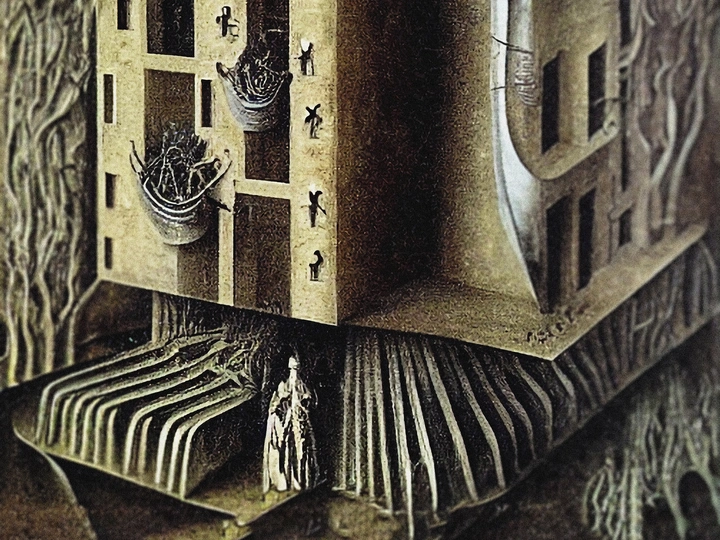From the Building Life Cycle to the Cycle of Life

Egidio Cutillo is an architect, PhD, and a researcher based in Venice. His field of investigation embraces architectural design and theory with a focus on design processes and aesthetics of a post-sustainable condition, aiming to bridge the gap between building-life-cycle and the cycle-of-life of living beings. Thus, his research moves from re-cycle theories to the real proliferation of wildness in the human domain to figure out a radical shift in thinking and designing by taking the paradigms of ecology and sustainability to their extreme application.
He holds a master’s degree from the Università Iuav di Venezia, Department of Architecture and Arts (2018), and a PhD in Civil-Environmental Engineering and Architecture from the University of Trieste (2022). As research fellow, he has been developing his investigation first at the University of Genova within the research program "SYLVA - Rethink the sylvan. Towards a new alliance between biology and artificiality, nature and society, wilderness and humanity" (2022), and then at the research centre "C.SCARPA - Centro Superiore di Comprensione, Anticipazione e Ricerca Progettuale Applicata" of the Università Iuav di Venezia, where he currently works (since 2023). He is member of the editorial team of the Iuav's multidisciplinary scientific journal "Vesper. Rivista di Architettura, arti e teoria | Journal of Architecture, Arts & Theory" (since 2019).
Alongside his research activities, he is involved architectural and landscape projects, which are the chance to test and verify theoretical assumption, such as the award-winning "Heritage Machine" (Buildner competition "Mega Dunes Eco Lodges - Abu Dhabi", 2021) and "Relitto. Cinque spin-off sulla Scala dei Turchi" (Biennale dello Stretto "Challenge Under 35. Progetti intorno al Mediterraneo", 2022).
Borrowing from a maxim by Mark Fisher, one can say it is easier to imagine the end of the world than the end of sustainability, probably because we must be sustainable if we even hope to witness that end. By extension, even architecture must today proclaim itself as sustainable; but while sustainable design is affirmed as an imperative, it falls into crisis precisely because it is hypostasized in the act of designing through green labels. Nevertheless, the impasse of a sustainable design unable to radically face environmental crisis is the very chance to overcome it. A post-sustainable condition in architecture can be achieved by re-discussing one of the fundamental principles of sustainability: the building life cycle, which must be reinterpret literally as a design agent.
Through the examination of self-building and self-destructing architectures, as well as architectures which embrace the end of their life cycle by surrendering to the environment, we can define the fundamentals for design theories and practices beyond the classical protocols of building life cycle: enduring their own biodegradability and eventually sacrificing themselves in favor of other life forms to the point of disappearing without a trace, architectural organisms emerge as living bodies and, as such, also accept to be re-absorbed by the ecosystem. Being a living body opens up the possibility that architecture participates in concrete life cycles in scale and in time with the living forms, triggered by alliance and conflicts among human and non-human beings. By deactivating the technical phases between birth and decommissioning, and by performing its own total recycling as a living body, the project reforms the central role of constructive and destructive building process, the artifact allows new dialogues between architecture and its context, thereby contributing to the ecological history of the planet, both physically and figuratively.